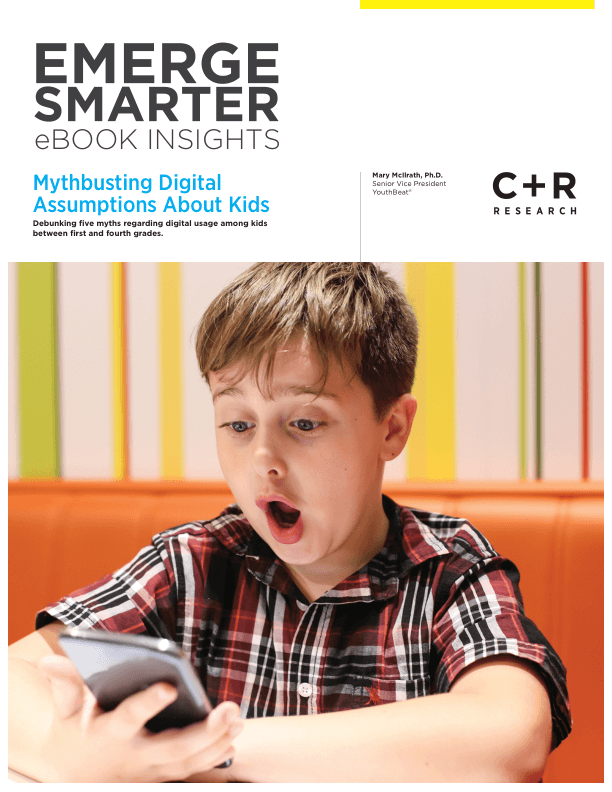
youth & family market research: Debunking Digital Myths
picture this:
A young girl is sitting on a sofa at home watching TV, remote in hand, surfing online and likely watching the same kind of content she is watching on TV. She’s also talking on the phone, listening to some music on her iPod, and probably eating all at once. She’s a multi-tasker.
The image we just described is not unlike what many visualize when thinking about how kids engage digitally at home. Content providers can sometimes get very excited about the multiple layers that they’re able to offer to viewers, and they believe kids are accessing all of this stuff at the same time. The reality is that this isn’t what we’re seeing at YouthBeat®. Instead, kids are using media sequentially rather than simultaneously.
The purpose of this summary is to dispel several myths regarding the digital world of kids at home.
contributors to this guide

Mary McIlrath
Senior Vice President, C+R Alum
kids are just multitasking machines
When asked what they were doing the last time they watched TV, nearly 50% of our kids in first through fifth grades said that they were eating while watching TV. 25% of them were also playing in some way while the TV was on or just talking to somebody, and not necessarily on the phone. One medium at a time is what they can handle.
a look back
At YouthBeat®, we’re always updating our questionnaires and adding to our lists when we ask about the types of things youth are doing at home. Recently, we looked back at 2011 and compared the data to the trends from 2014.
What we found in 2014 is that young people were doing more tasks, but not at the same time. In fact, a large percentage of the kids we asked performed a larger number of shorter, discrete tasks and activities in 2014 than they had in 2011.
For example, we saw a decrease in both TV watching, which dropped from 61% to 56%—a significant drop—and going online, which dropped from 32% to 25%. “Going online” less is due to the advent of new technologies and the increased availability of tablets such as the iPad—34% of kids said they’re using them—and apps. Kids don’t consider using apps as “going online.”
The implication here is that they ‘meet’ with friends through texting—a Top Three while watching TV—and playing online video games or chatting through apps potentially replacing the need to physically hang out with their friends as often.
takeaway: Give kids content that they can access on their own time and in the order in which they want to.
Create things that kids can do sequentially. It can be an expression of your brand everywhere on a tablet. It can be accessible on a website. It can be through television or in a retail environment but not necessarily something that you’re asking them to access all at the same time. It’s important to also realize that a lot of kids have pretty strict rules about screen time at their houses. While they might have thirty minutes a day that they’re allowed to watch TV, they might have another thirty minutes a day that they’re allowed to use a tablet. Why would you want to blow both of those at the same time?
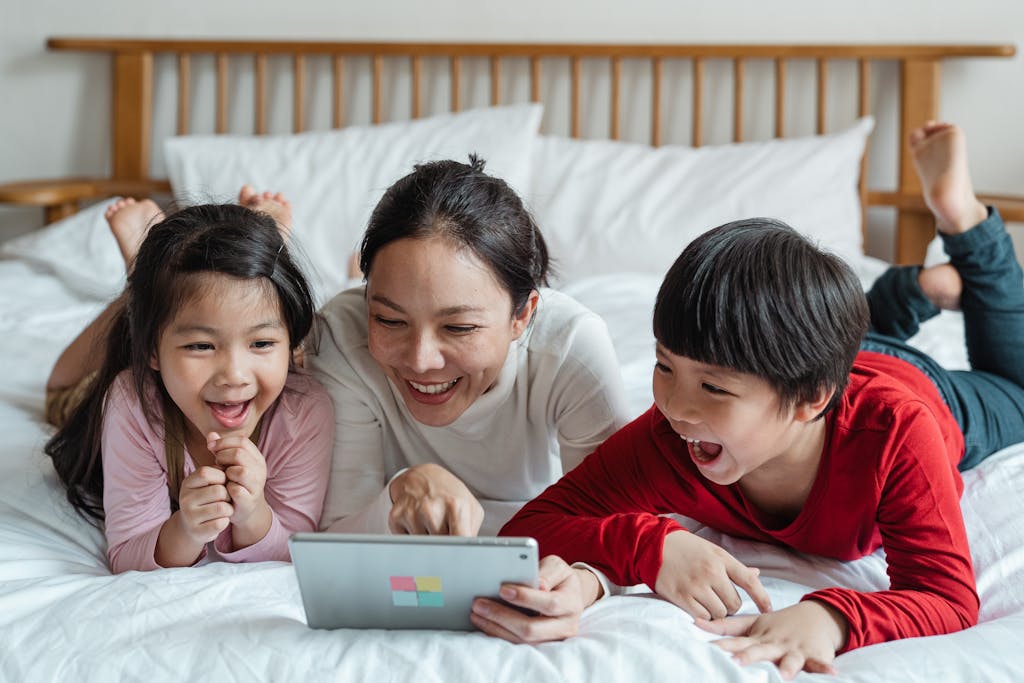
start young
Conventional wisdom says that if you have a brand that is targeted to a kid, tween, or teen audience, get them while they’re young and keep them interested in the property as they grow up. However, what we’ve seen is that the preschool space is rather saturated. Pick up your mobile phone right now and do a search for ‘preschool educational’ and see what comes up. You’re going to find a lot of free and really overlapping content.
parents influence
When content providers are creating apps for the preschool marketplace, they’re strategically talking to educators and parents. Parents, specifically, are concerned about the content of kid apps and how much they’re willing to pay to get the experience they want for their kids. They gauge what their kids can download as well as how much time they spend playing with apps. And, they’re most likely to be the owners of the devices their kids are using.
Tweens have a little bit more access to apps and more freedom to choose them. They receive less supervision from their parents in terms of caring for their devices as they’re less likely to break them. 84% of them have their own device.
By the time they’re teenagers, 86% of them have their own devices and are free to download whatever apps they want. Parents are less likely to refill iTunes accounts for their teenagers, and generally feel less concerned about getting them the latest devices.
Implication:
It’s important to get kids and tweens in on the app development game. Brands need to run their ideas past them and understand that there’s a ton of content out there already in the digital space for them. Doing something really disruptive or really appealing in some way to get their attention will get them coming back to you.

kids are all coders at heart
I once heard a great analogy at a conference. The presenters said that for children today, the internet and apps are really just like water, and that children are the fish and don’t see the water. A lot of consultancies will tell you that the internet and apps are part of their natural environment and that kids want to code and create with it.
However, what we see is a little bit more nuanced. We understand that kids do like to create, but what they tell us is that they don’t necessarily want to build from scratch. Think about some of the longstanding digital worlds that have been so compelling to children. Things like Webkinz and the Build-A-Bear Workshop had a digital world for a long time. At Youthbeat®, we’re still talking about Club Penguin with our respondents and that’s been going on for about ten years!
Kids find these types of digital worlds very compelling because they can go in and customize them. They have some building blocks. They can have their own house. They can have pets. They can have automatic friends. They get to plug in their own self-expression into those worlds. These worlds become their own, and are private to them, and nobody can tell them what time you go to bed there.
Something that does this particularly well is Minecraft. If you’re a digital content provider, you may not be impressed with the game’s lack of a 3D environment and its rather pixelated graphics—it looks like something from the 80s! Yet the game is very compelling to kids because they can enter this world and put the pieces together any way they want to.
Implication:
As a content provider, the more you can do to give kids the building blocks to put together in a unique way, the more satisfying your content will be to them. Coding is not something they’re really entrenched in as kids, and they’re more interested in using their imagination and self-expression to create a spectacular world that is all their own.
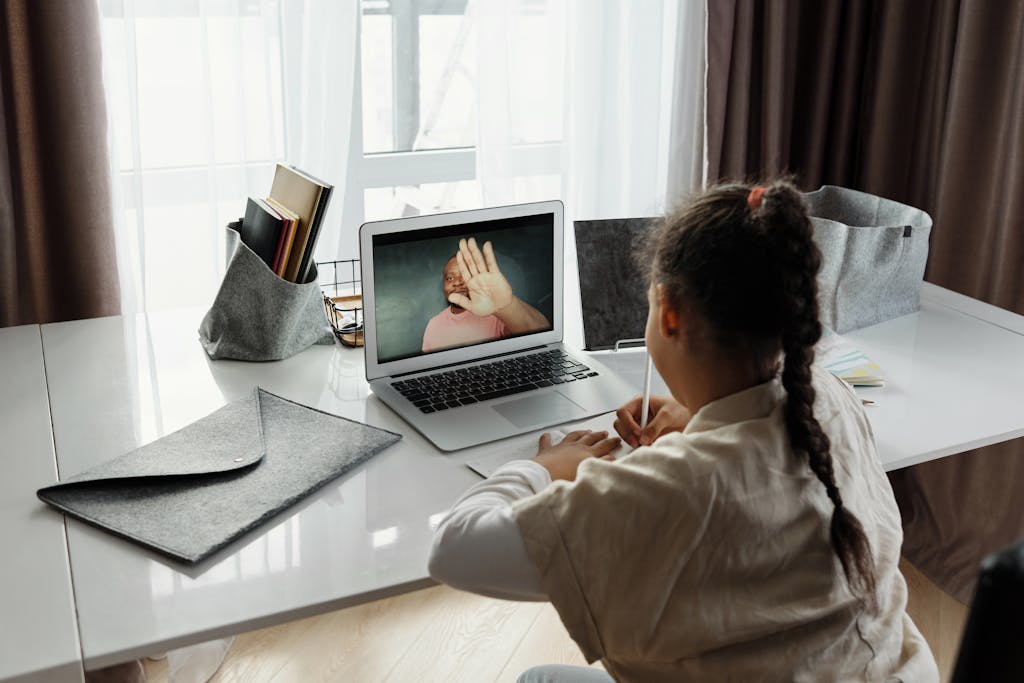
digital play is mental, not physical
We’ve been talking about this for a good decade. There’s sometimes a dirty association with too much digital play and becoming a couch potato or childhood obesity. There are concerns that kids are not moving enough and just sitting on the sofa engaged in too much screen time. Our take on this is that today’s technology can really be much more high touch.
For example, Zoomer could have been designed as an app or a video game. Instead, it evolved into a wonderful robotic dog that—in its dinosaur version—was one of the most requested toys for the last two Christmas holidays running. It’s great digital content that comes to life, and is completely high touch. It does all kinds of amusing and amazing tricks, and it really captures kids’ hearts.
Another example of technology being more ‘high touch’ is the arcade at Universal Studio’s Cabana Bay. The ‘rides’ at this arcade are sophisticated—I call them rides rather than games because they are experiential. Kids get to feel the wind in their hair. They get to feel the seat shaking underneath them, and they feel like they are riding something even though it’s just in a video arcade. It’s a digital experience, but it comes into their real world. Other types of games in an arcade-type setting such as this could potentially involve app-enabled devices kids can use to create real world effects.
If you go to some of the new Build-A-Bear Workshop stores, the window displays have floating virtual balloons that you can ‘pop’ to unleash a shower of confetti. This custom-created experience is another way that the digital world can come into the real world and create a very real 3D experience.
Implication:
Find ways to make a digital experience a sensory one by bringing it into a kid’s world. It’s not just about interacting with a screen, but rather living your property. The more catchy it is, the more popular it will be.
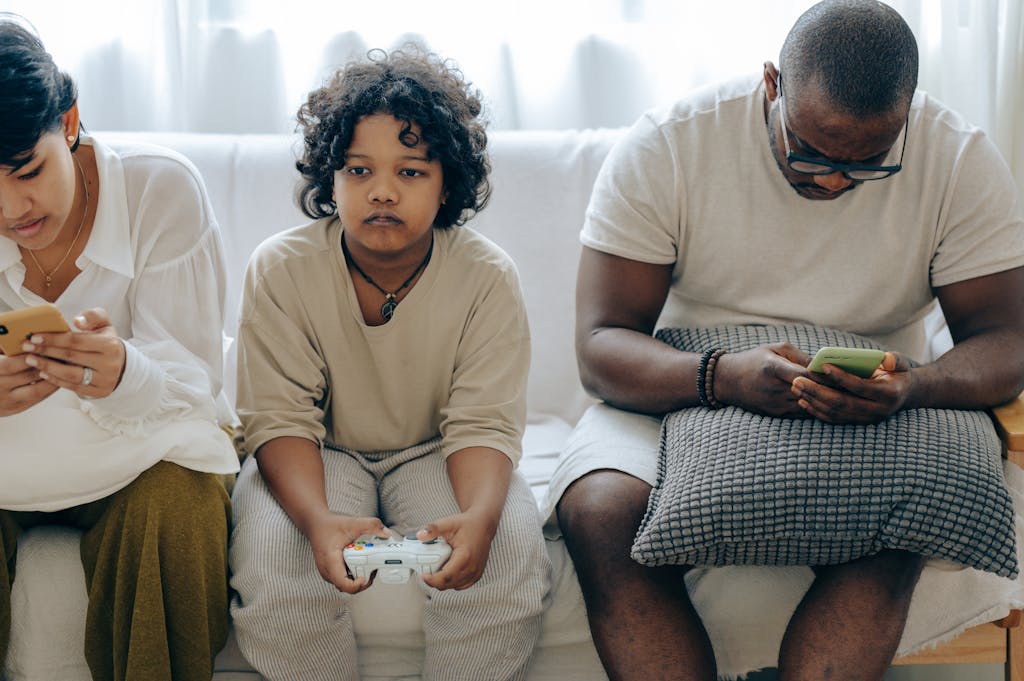
they want digital all to themselves
There’s a belief that since they’ve grown up in a digital world, it belongs to them and that they really want to keep it all to themselves. But our data doesn’t support this belief. Instead, we find that others in the home are an integral part of their digital space enjoyment.
For example, if you ever watch HGTV and have happened to catch Millennial parents looking for a home for their family, what is the first thing they always ask for? I’m sure you said it out loud. They’re looking for an open plan. They want this open plan where all the family members can sort of see each other and share the space. This is quite different from what Gen-Xers wanted in years past when they were kids—separate rooms, closets and separate phone lines!
Unlike Gen-X kids, today’s kids don’t have to resort to secrecy in order to have their own world because they can have their own private worlds on their devices—remember how much Gen-Xers insisted on their own rooms and even phone lines? Kids today don’t have to be in a separate space. They can share the space with their siblings and with their families. What’s more, we find that they are actually sharing their enjoyment of their content with their families.
For example, when we asked parents how often they watch TV with their child, the Top Two responses were ‘always’ and ‘sometimes.’ The responses from their children mirror this data as 90% of tweens and 93% of kids report they are co-viewing with their parents. That’s pretty profound considering there have been so many varied programs such as The Voice, Dancing With The Stars even American Idol—Kelly Clarkson, its first winner, is already a Millennial mom. Seeking out programming that has something for everybody is a bit of an axiom for this generation.
The lesson here is that you want to serve the siblings and the parents and really make them matter in the content you’re developing for kids. This isn’t to suggest that you should create sibling-specific content or that you should necessarily go into the content expecting it to deliver equally well on all of your targets. Just know that they’ll be watching it together. Think about that when you’re developing things for them to consume, and develop screen experiences that aren’t just for kids.
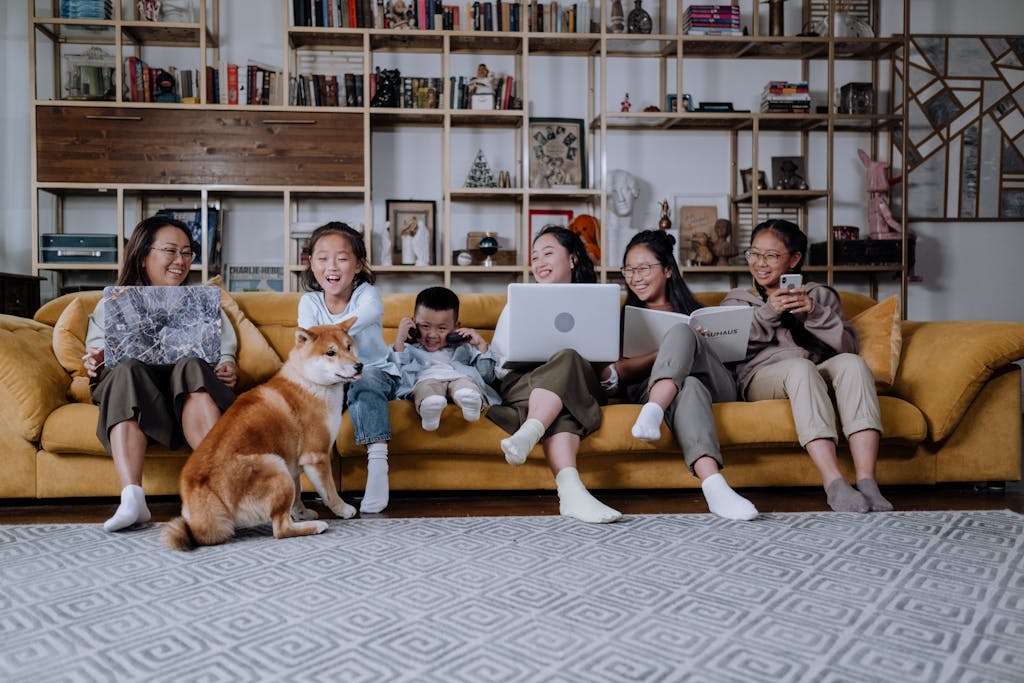

Mary McIlrath
Senior Vice President, C+R Alum
